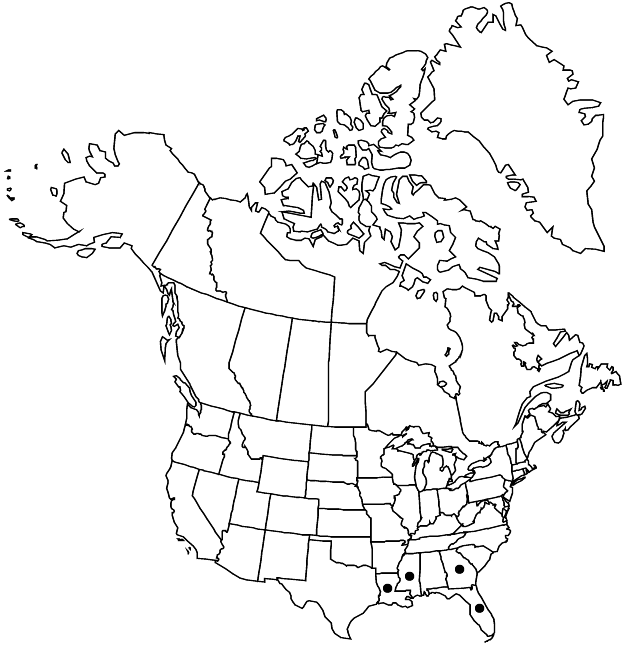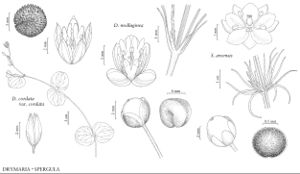Difference between revisions of "Drymaria cordata var. cordata"
FNA>Volume Importer |
FNA>Volume Importer |
(No difference)
| |
Revision as of 22:35, 16 December 2019
Plants annual, herbaceous, glabrate to glandular-puberulent, often densely so in inflorescences, not glaucous. Stems prostrate and spreading, branched, rooting at some nodes, 20–60+ cm. Leaves opposite; stipules persistent, divided into 3–5 subulate to filiform segments, 1–2 mm; petiole 2–15 mm; blade orbiculate to reniform, 0.5–2.5 cm × 5–25 mm, base cordate to rounded, apex rounded to acute. Inflorescences axillary and terminal, mostly open, 5–15+-flowered cymes. Pedicels shorter to longer than subtending bracts at maturity. Flowers: sepals with weak veins arcing outward at midsection and ± confluent apically, lanceolate to ovate (herbaceous portion similar), 2–4(–5) mm, ± equal, apex acute to acuminate (herbaceous portion similar), not hooded, glabrous or with ± sessile glands; petals 2-fid for 3/4+ their total length, 2–3 mm, 1/2–2/3 times as long as sepals, lobes 1-veined, vein unbranched, linear, trunk absent, base abruptly tapered, apex rounded to acute. Seeds dark reddish brown, snail-shell-shaped, 1–1.5 mm; tubercles prominent, rounded. 2n = 24 (Africa, India), 36 (South America, Taiwan).
Phenology: Flowering year-round.
Habitat: Lawns, gardens, disturbed areas
Elevation: 10-30 m
Distribution

Fla., Ga., La., Miss., Mexico, West Indies, Central America, South America, introduced in tropical areas of the Old World.
Discussion
Selected References
None.
